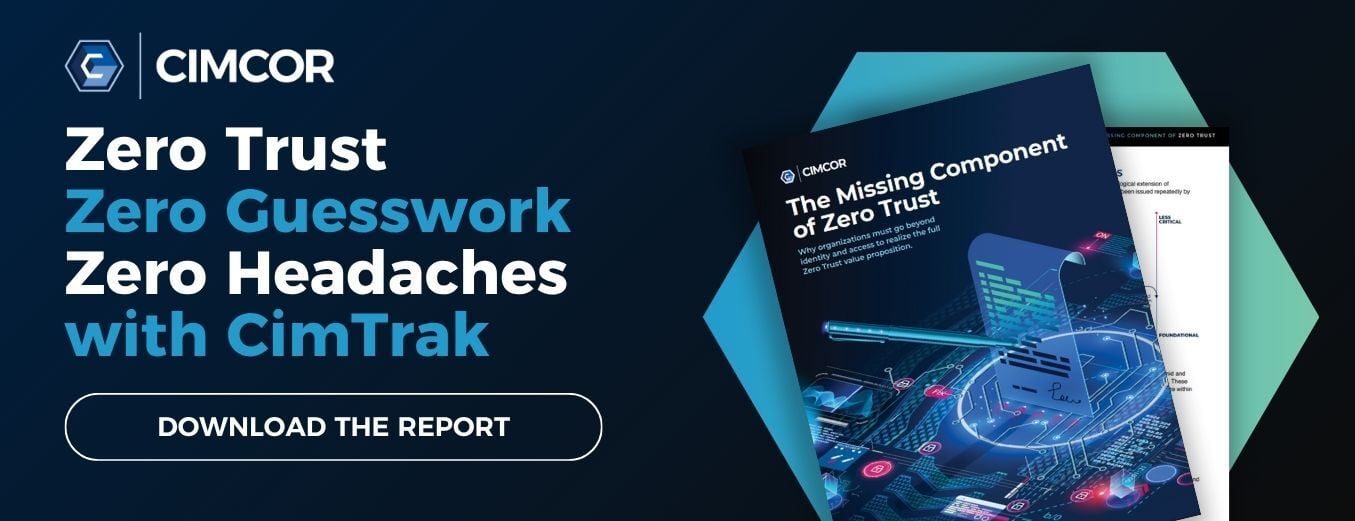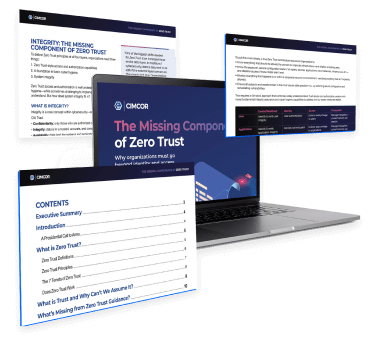Are you doing enough when it comes to cybersecurity? You’ve implemented the strongest firewalls and secured your perimeter as much as possible; isn’t that enough?
Not quite.
An estimated sixty percent of all security breaches result from insider threats. This means that no matter how strong your perimeter is, it cannot save you because the threat is already inside. How can you protect against threats that originate from inside your organization? The answer is to implement a Zero Trust Architecture.
This post will examine five critical Zero Trust Architecture benefits your organization can take advantage of after implementing this network architecture solution.
What is Zero Trust Architecture?
Before properly discussing the benefits of adopting a Zero Trust architecture, we must establish some baseline information.
What is Zero Trust Architecture? Zero Trust is an information security model that removes all implicit trust from your organization’s access processes. According to an IBM report, Zero Trust approaches have reduced average data breach costs by $1.76 million.
Instead of assuming that all users within your protect surface can be trusted, Zero Trust Architecture continually evaluates trust, requiring regular authorization and verification across all users and devices. Forrester Research analyst John Kindervag first used Zero Trust. The structure rose to popularity after Google adopted it in 2014.
Zero Trust is based on three core components:
- User and Application Authentication: Users must enter credentials like a username and password to access all applicable applications.
- Device Authentication: Your system will verify the credentials of any device attempting to access your system.
- Trust: Trust is never implicit and never implied. You only give users the minimum level of access they need to do their job.
With this understanding of the basics of Zero Trust, let’s begin our exploration of the top five benefits you can enjoy when implementing a Zero Trust Architecture in your organization.
1. Increased Visibility
The first benefit of implementing a Zero Trust Architecture is that this structure gives you increased visibility into the users and devices accessing your company’s data.
One of the key elements of Zero Trust is micro-segmentation. Micro-segmentation divides your workforce’s system access based on their specific job duties and access needs.
With micro-segmentation, you can break down system access by:
- Who accessed the data
- What they accessed
- Where they were able to access the data
- When the access occurred
This transparency into your users’ access and data usage will allow you to detect unusual behavior patterns that may indicate a breach.
2. Improved Data Protection
Zero Trust Architecture also provides you with improved data protection. A large portion of the reason why this architecture provides such strong protection is because of the basic principle of Zero Trust: “Never trust, always verify.”
By only offering your users the access they need to do their jobs and requiring continuous verification, you minimize the amount of damage an attacker can deal after gaining access to your system.
If one user’s login credentials are compromised, an attacker will still have minimal access to move laterally within the system. Rather than having wholesale access to everything within your attack surface, the attacker will only have access to the resources available to the user whose credentials they have stolen.
Repeated attempts at unauthorized access by the same user will also make it easier to identify and contain attackers in your system, minimizing attacker dwell time.
3. Increased Remote Workforce Security
Strong support for a remote workforce is paramount in the current business environment. In terms of security, a remote workforce poses multiple unique challenges. When your workforce is remote or hybrid you may experience:
- Users on multiple devices
- Users accessing company data from unsecured networks
- Users accessing personal data from work machines (and vice versa)
The traditional idea of a defensible perimeter falls apart in a remote work environment. If your workers are accessing data remotely in any capacity, a Zero Trust Architecture is the best way to keep your data safe.
Micro-segmentation and Just-in-Time (JIT) access policies help to ensure that users are only accessing sensitive data from approved devices during approved time windows.
4. Continuous Compliance
Next, you can enjoy continuous compliance when you have a Zero Trust Architecture. What is IT compliance? IT compliance standards are a series of regulations designed to improve security, maintain trust, minimize the impact of data breaches, and more.
How can a Zero Trust Architecture provide continuous compliance support? Firstly, Zero Trust helps you to protect your organizational data. Additionally, this structure enables you to gather and maintain the documentation you need to comply with compliance audits. Your Zero Trust setup will log a string of login tracking data, creating an audit trail you can use to support your compliance efforts.
The CimTrak Integrity Suite works within your Zero Trust Architecture to log all changes in systems and applications. Additionally, you can easily revert to a previous configuration or version of your data in the event of unauthorized changes with CimTrak.
5. Simplify IT Management and User Access
We don’t necessarily think of a simple solution when we think of Zero Trust. After all, a Zero Trust Architecture takes time and effort to set up. However, once the upfront work is complete, your Zero Trust system will be simpler to manage and maintain.
Zero Trust can automate processes for access requests and more. This automation frees your IT team from wasting time on manual request approvals. But your IT team won’t be the only workers who benefit from this system!
Related Read: What Can Cybersecurity Learn from IT?
By setting up automatic workflows related to access, you can avoid chokepoints that would generally require a worker to wait for manual approval to continue their work.
Unlocking Zero Trust Architecture Benefits for Your Business
Implementing a Zero Trust Architecture in your business requires time, effort, and dedication from all levels of the organization. When considering how to implement Zero Trust, remember these crucial benefits.
Not only will your Zero Trust Architecture benefit your business by increasing data security and helping you remain compliant, but it will also save your IT team time and effort in the long run. This is especially true if your implementation includes advanced system integrity assurance software.
If you're looking for a file and system integrity solution that aligns with Zero Trust initiatives, check out CimTrak. Our file integrity monitoring software not only alerts you when changes occur but can also automatically roll back unauthorized changes, ensuring your IT infrastructure remains configured in a state that is known to be legitimate and secure.
CimTrak offers you the ability to quickly and easily manage your IT infrastructure, but file integrity monitoring is just one piece of the puzzle. Download the Missing Components of Zero Trust report to discover precisely what to avoid and how to implement and monitor your Zero Trust solution with ease.
Tags:
Zero Trust
August 18, 2022




